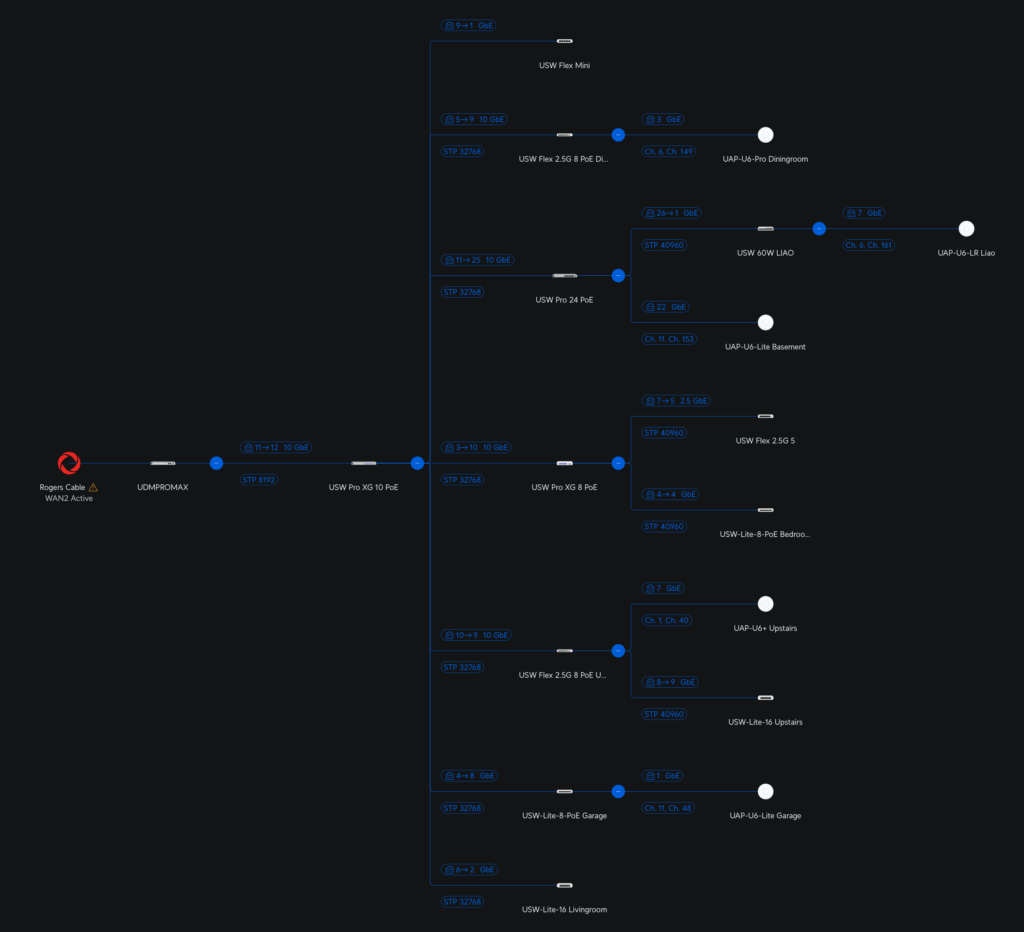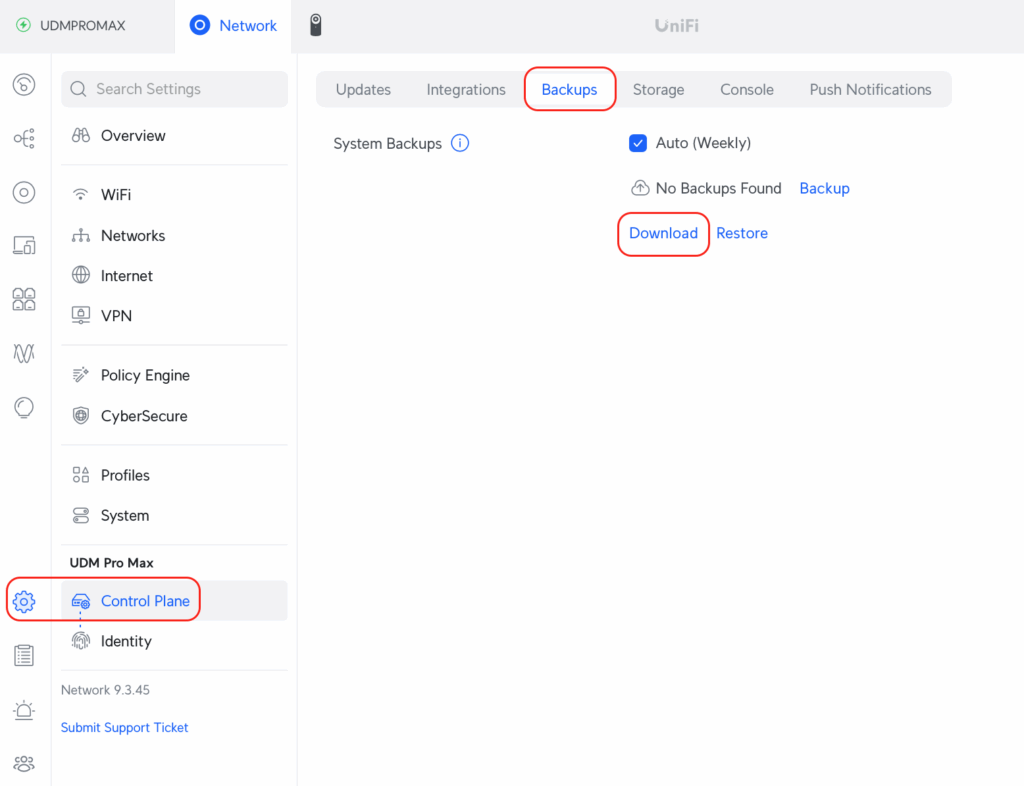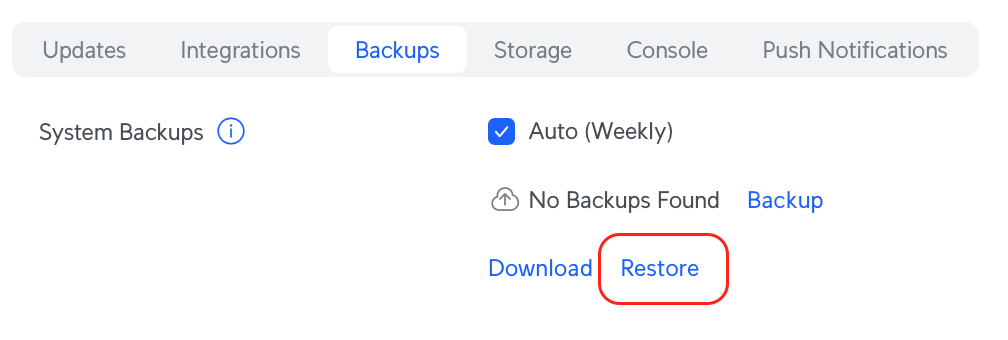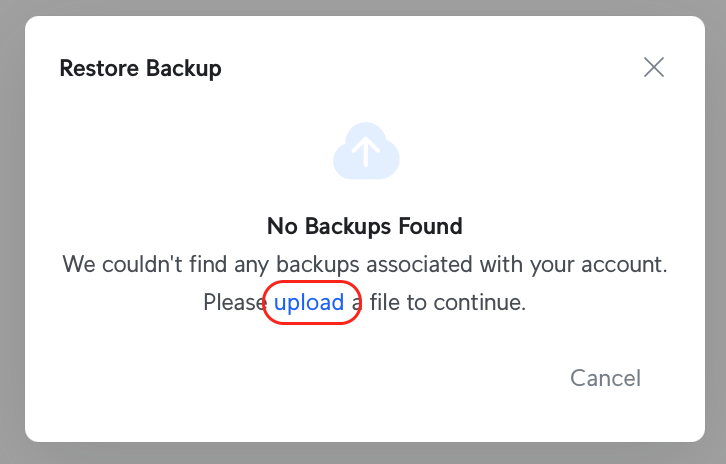TelMax started to roll out their fiber infrastructure in my neighborhood during the summer. Last month, a sales team knocked on my door and asked whether I was interested in switching. I told them I was, and it was the symmetrical 2Gbps speed that caught my attention. I also shared my concerns:
- The ability to establish bridge mode with an external IP address;
- I have interlock bricks on the side of the house, so I wanted to ensure the installation was clean and neat with the interlocks;
- I have the flexibility to where I terminate the fibre cable in my basement;
The sales person told me all of my issues will be addressed to my full satisfaction. I inquire how long will it take for the installation process? They told me it should be up and running within 30 minutes.
I took the plunge decided to sign up on the last week of August, and got an appointment for September 8th (today) for installation. The appointment is suppose to be today from 8am to 12pm, see the email below:
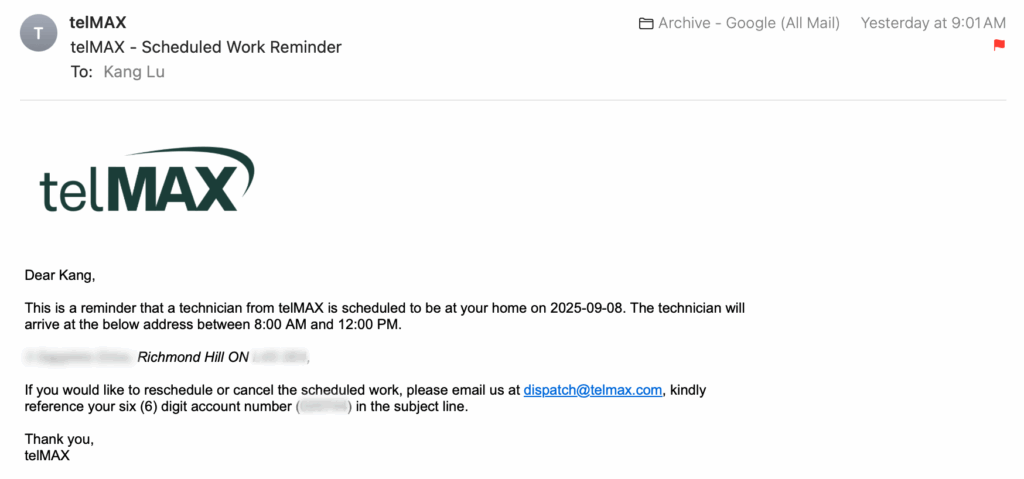
The installer came at 11:49am and told me that the installation is broken into two parts. He is just the first part, which is to install a fibre cable from the side of the house and into the house where I would like the modem and WiFi units to be. Since I didn’t care for the Eero units, I left them in the box and instructed the installer where he can place the Adtran modem. This part of the installation was fairly painless. Overall I think the installer was courteous and did a pretty good job running the wire in my basement.
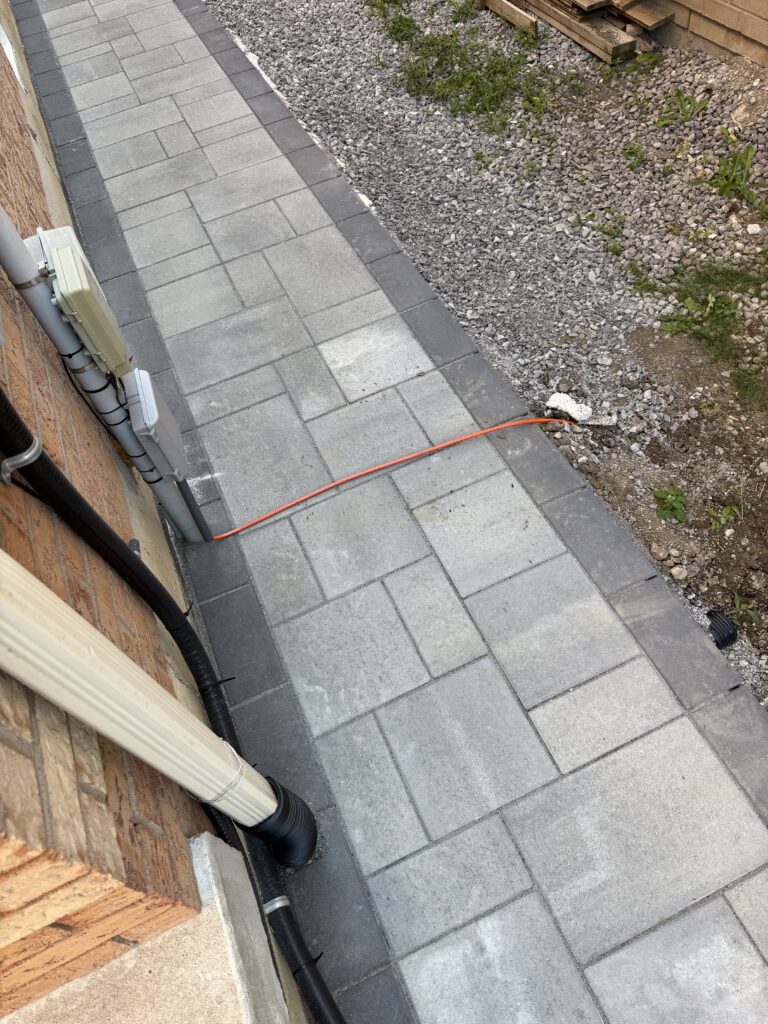
The second part of the installation came around 2 hours later. They installed a flexible, orange conduit that contains a fibre cable from the curb to the side of the house. I told him that I have interlock bricks by the side of the house, and then to my surprise he said that they don’t handle the interlocks. Another party will come later to fix the interlock.
Once again we are in a waiting mode with a safety hazard on my interlock. There is again no expectations set, no scheduling, no appointments. We are now with more anxious waiting. I guess that is how it goes.
Where we are now as of 5:26pm:
- Wait for the interlock guys to come;
- The modem still shows a red LED so not yet connected;
- Feeling a little anxious because the promised of 30 minutes has turned into a drip by drip installation experience by different parties providing services for TelMax but not really from TelMax;
TelMax is a typical case of over promise and under deliver. For a new service being introduced to a new neighbourhood, its opportunity to shine has been turned into mixed feelings of anxiety and customer service uncertainties. This is NOT how you should roll out a brand new service in my opinion.
Update September 8, 5:30-6:00pm:
I logged into the TelMax site and logged in. I contacted their customer support via email and indicated my current status. There was no ticket generated, so we will see what happened.
The process is still fluid, and I will update this as the installation process continues.
Update September 8, 6:11pm:
Someone called me from TelMax provisioning team (not their customer support team) and wanted to know the status of the modem. I told him the optical LED on the modem is still red and he confirmed that there is still a line integrity issue.
This call was not the result of my previous support email that I sent. I also took the opportunity to let him know about the outstanding interlock brick issue, and he told me that is a separate team.
Net-net, they will have to send someone out tomorrow to check the line. I am lucky to be working from home otherwise not sure how other customers can deal with this fluid situation.
Update September 9, 11:49am:
Called TelMax customer support at 1-844-483-5629 spoke to a wonderful lady and told her of my situation and inquired about what is the next step, since I have no visibility on when this will be resolved. She told me that she coordinated with dispatch and that someone, named Bill, will be coming between 4pm to 8pm this evening.
Update September 9, 5:09pm:
I received a text message from 1-289-212-4413 at 5:09pm.
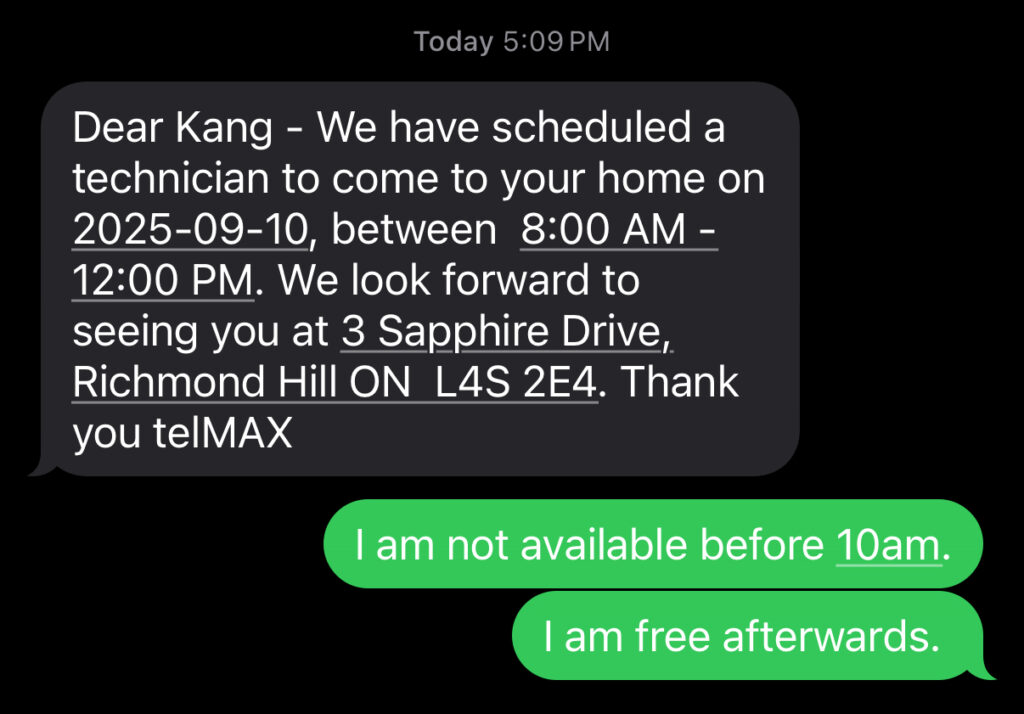
Once again another let down. I freed my evening in preparation for the visit, to learn from the above text message that it is now moved to tomorrow morning, which I am only partially available. Perhaps I am not being patient enough, but I am beginning to feel from frustrated to annoyance.
Update September 10, 1:16pm:
A technical service guy came near noon. His name is Carlo, and he was the first person who I felt really know what he’s doing. Kudos to both Carlo and Peter in identifying the cabling issue and completed the provisioning. Now we are up and running. Problem solved!
Update September 12, 11:56am:
TelMax sent an email to me indicating that the installation process is completed, which is largely true since I am now using their Internet service. However the interlock bricks and the exposed fibre cable is still an outstanding issue. I just sent an email to their support for follow up. So far, no responses.
Update September 16, 6:33pm
This morning at around 8am I called customer support to enquire about the interlock bricks, because the wire is still exposed and it has been more than a week since initial engagement for the deployment. The customer service rep was trying to be helpful but the net-net result is that he listened and took notes. We ended the call with him promising me that someone will call me today to follow up.
We are now in the evening, and no one has called. I also took the opportunity to reach out to the original sales staff, who to their credit is trying to help me out. So with another day gone, the orange wire is still a safety hazard on my pathway. I still do not have an idea of when this will be resolved.
Update September 16, 6:47pm
After venting out my frustration by writing the previous update, I finally decided to just contact my landscaping contractor who originally did my interlock and get it fixed. They got back to me immediately with a timeframe of either Friday or Monday. It is wonderful to deal with professionals. No fuss no muss. No customer support that never gets back to you. I felt like a load off my shoulders.
Yes this is additional cost but I rather pay to get a good night sleep and lower blood pressure.
Update September 17, 5:06pm
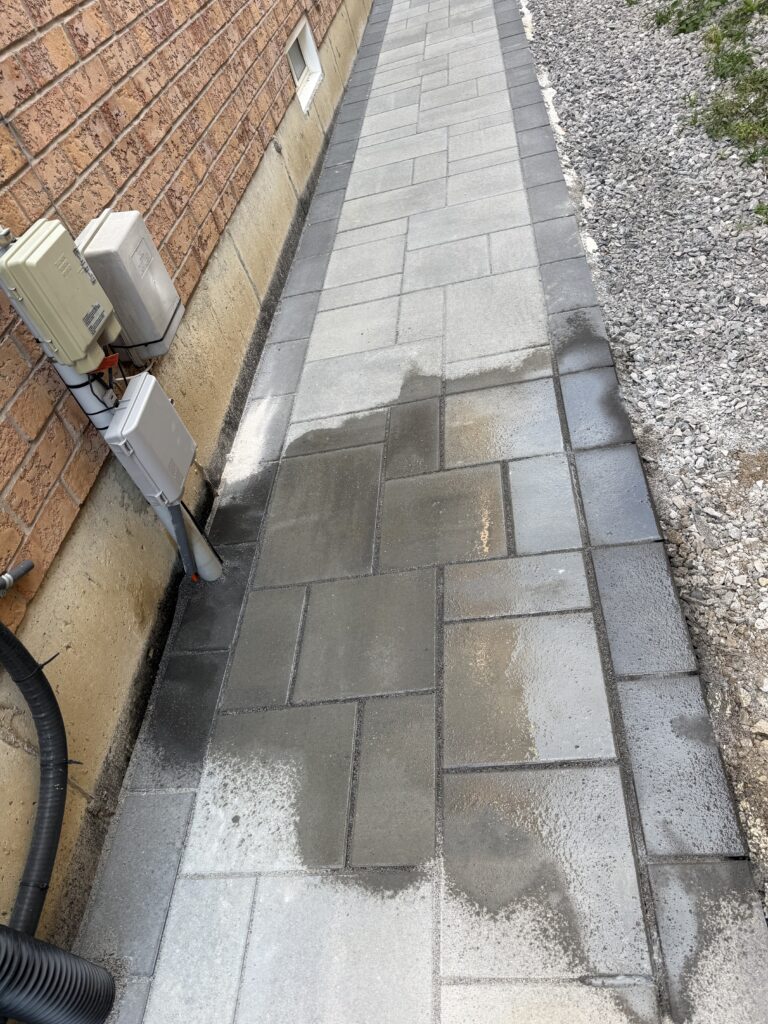
About an hour ago DHM, a wonderful interlock contractor showed up and told me that TelMax asked them to come and fix up my interlock. They did excellent work, and the line is finally suppose to be where it is, below the ground and underneath the bricks.
The person from DHM were great guys, and I thanked them profusely. Their workmanship was topped notch!
So all in all it took 9 days from September 8th until now. We can finally claim that the deployment is completed and the service is working normally. Given the multi-party or contractors involved for the deployment, I personally think TelMax could have made things easier and put my mind at ease by keeping me the customer fully informed of the status. They failed in the coordination, and turned what could have been a wonderful experience into one filled with anxiety and frustration. I hope they learn from this will treat future deployment with proper communication.
I want to put in a special thanks to Khushboo Mistry, who really helped me in coordinating and navigating within the TelMax team to finally get this done. As a person on the Sales team, this was not part of her job. She really did above and beyond for me. For this, I really thank her for it.
So in conclusion, here is my assessment:
- A – for Internet service;
- A – for professionalism of all staff involved; from sales, technicians, and to the DHM the contractor who fixed my interlocks;
- F – for communication and customer support department; mainly for unpredictable planning and scheduling; non-existent feedback loop; and no commitment and expectation setting;
It is unfortunate to have one part of the organization to spoil the experience. I wish they will fix their customer support and scheduling process. It is people like Khushboo who will make TelMax a great company, and not the poor organized deployment and installation process that someone else in the company came up with.

